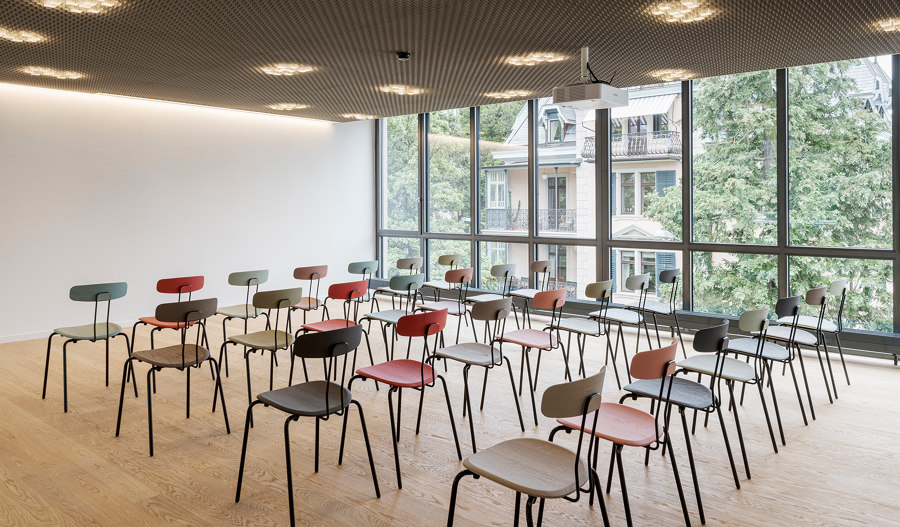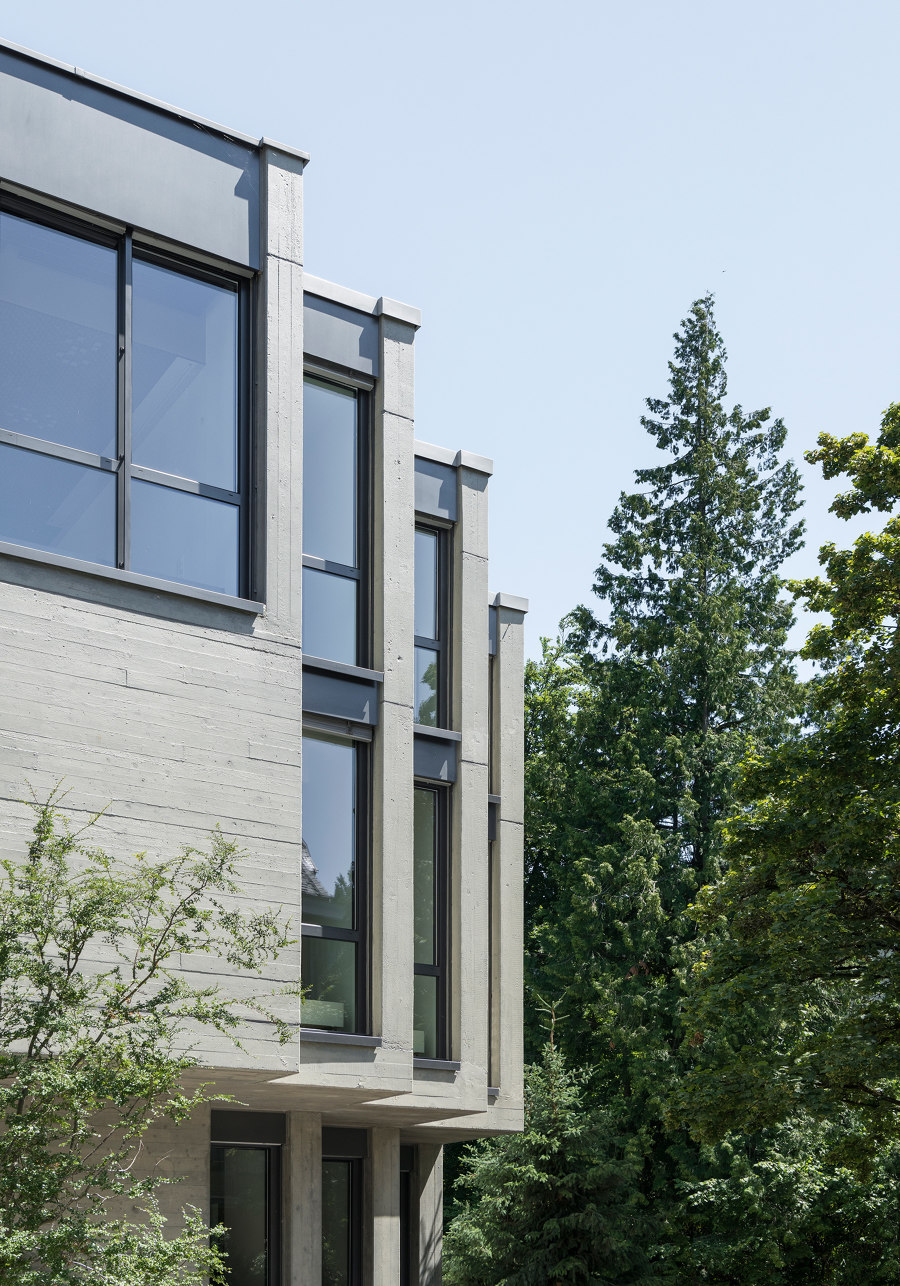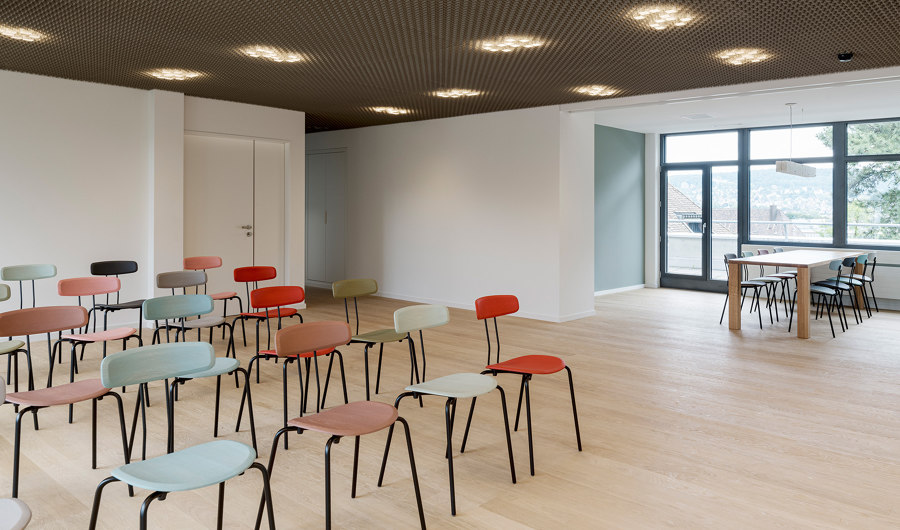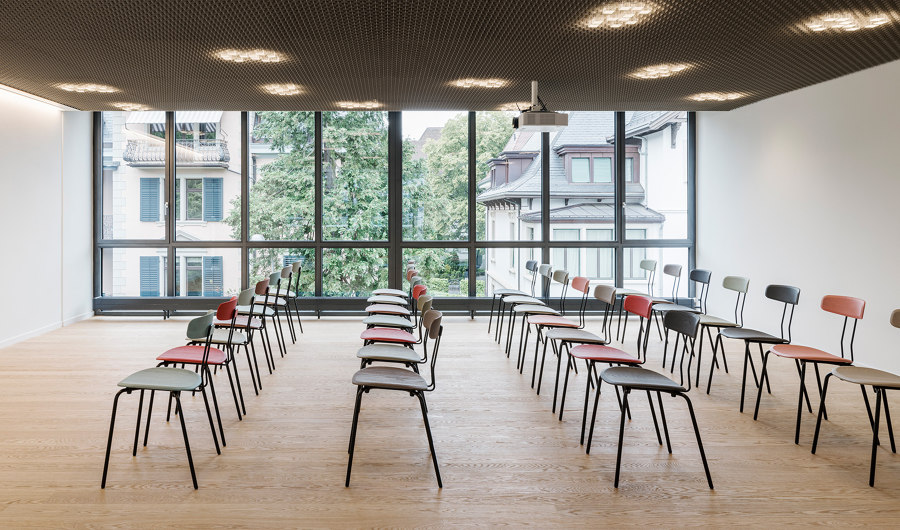In Zurich's SCNSI, the Swiss Clinical Neuro Sciences Institute, the Okito chair by Zeitraum demonstrates the effective influence of furnishing on the architectural context.
The SCNSI in Zurich was furnished with the Okito chair designed by design studio Läufer & Keichel. © Beat Bühler

The SCNSI in Zurich was furnished with the Okito chair designed by design studio Läufer & Keichel. © Beat Bühler
×Seeing furniture in an actual architectural context is the best way to perceive its presence and impact on an interior. The proportions, colours and shapes of chairs and tables, for example, can then enter into a dialogue with the materials of the given structural environment, illustrating the harmonious and complementary interplay of design and architecture.
Take the SCNSI – the Swiss Clinical Neuro Sciences Institute in Zurich – which has been outfitted with Zeitraum furniture. The reinforced concrete building at Bürglistrasse 29, built in 1972, was recently converted by the still young local studio Lippuner Sabbadini Architekten to meet the requirements of modern consultation rooms and seminar facilities.
The historic building of the Schweizer Institut was renovated by Lippuner Sabbadini. The interior design came from CWP Consulting & Communication. © Beat Bühler

The historic building of the Schweizer Institut was renovated by Lippuner Sabbadini. The interior design came from CWP Consulting & Communication. © Beat Bühler
×CWP Consulting & Communication took charge of the interior design. They opted for a classic from the Zeitraum programme: the PJUR table, designed by Peter Joebsch. Its 40-mm-thick solid wood top makes the 180-cm-long table both robust and striking: over the past two decades, the design has become a perennial favourite of Zeitraum’s.
A newer Zeitraum piece was also chosen for the seminar rooms of the SCNSI, namely Okito, which was developed by the design studio Läufer & Keichel. Here, the chair is featured in an array of colour stains. Combined with the oak parquet flooring, the result is a bright and harmonious colour concept that is intended to contribute to the well-being of patients.
The light-looking Okito chair, shown here in various colour stains, is well suited to situations where individual, mobile seating solutions are required. © Beat Bühler

The light-looking Okito chair, shown here in various colour stains, is well suited to situations where individual, mobile seating solutions are required. © Beat Bühler
×The heart of the minimalist chair is the seat made of solid wood. With its CNC-milled contours, the seat anchors the chair frame and backrest. The bracket connections are simply bolted to the underside and are not visible from above. The backrest is likewise executed with its screws kept out of sight. The strikingly simple silhouette is a key aesthetic feature. In addition to the ergonomically shaped solid wood parts, the double bar of the backrest contributes to the special seating comfort of the chair. When leaning back, Okito’s backrest flexes slightly while following the rotational movements of the upper body, offering support to the user whatever the position and without restricting mobility.
© Architonic





